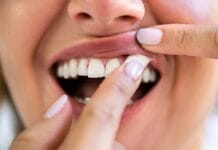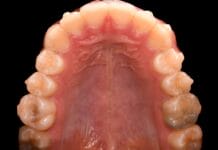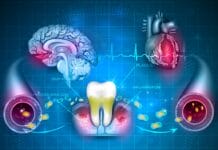The American Dental Association (ADA) and the Centers for Disease Control and Prevention (CDC) recommend brushing your teeth twice daily. Toothbrushing can be a very effective measure in reducing dental caries risk. Researchers and public health officials agree that brushing twice a day with fluoridated toothpaste is the best at-home method for reducing caries risk.1
Though brushing twice a day is the social norm in the United States and many European countries, brushing three times a day in Brazil is more prevalent. In a cohort study, the authors aimed to “assess the association between toothbrushing frequency and dental caries and tooth loss” in a population sample of adolescents in Southern Brazil.1
The authors hypothesize that toothbrushing three times a day provides better protection from dental caries and tooth loss than brushing twice daily.1
The Study
The baseline data was acquired in 2009-2010, and follow-up data was collected in 2012-2013.1
This study selected a representative sample of 12-year-old schoolchildren in Porto Alegre. Five geographical areas were selected based on the municipal water fluoridation system, and schools within these areas were chosen randomly in proportion to the number of public and private schools. Eligible participants were those born in 1997 or 1998 and regularly attended school, excluding those with special needs or fixed orthodontic appliances. One thousand five hundred twenty-eight students from 42 schools (33 public and nine private) participated.1
The parents of the students completed a questionnaire. The questionnaire assessed sociodemographic information and behavioral aspects. The students then underwent an examination by a qualified professional. Gingival bleeding index was documented as well as the presence of caries lesions (non-cavitated and cavitated, active and inactive). Missing teeth and filled tooth surfaces were also documented.1
The students were re-examined approximately two and a half years later. At follow-up, 727 students were unreachable, leaving 801 for re-examination and follow-up.1
The Results
The results of this study confirmed the author’s hypothesis. Brushing three times or more a day decreased the risk of dental caries and tooth loss in adolescents. Reducing the frequency of brushing from three or more times a day to two times a day increased the risk of dental caries by 40%.1
An interesting finding in the present study was that the added benefit of brushing three times a day was not consistent across the entire sample. The impact of toothbrushing on tooth loss varied depending on sex, school type, and the presence of gingivitis.1
Increased tooth loss was observed among adolescents who brushed twice daily, particularly in girls, students from public schools, and those with 50% or more bleeding sites. The association between sex and caries or tooth loss during childhood and adolescence may be due to earlier tooth eruption in girls compared to boys, which increases their exposure to caries risk over time.1
The benefit of brushing three times daily observed in this study does not appear to stem from mechanical cleaning or biofilm removal, as adjusting for gingivitis did not affect the results. This aligns with previous studies from the early 1980s, conducted before fluoride toothpaste was widely used, which found no direct association between brushing frequency and dental caries.1
There is no substantial evidence that more frequent brushing significantly improves biofilm control. Brushing once daily should suffice for caries prevention, as dental biofilm requires about two days to produce acid levels capable of enamel demineralization. However, brushing effectiveness is limited, and dental caries is influenced by multiple factors, including sugar intake, salivary flow, and buffering capacity.1
Using fluoride toothpaste enhances oral hygiene by combining mechanical cleaning with fluoride application. Brushing twice daily with fluoride toothpaste increases fluoride availability in the mouth. For example, an in-situ study compared twice-daily brushing with fluoride toothpaste (1250 ppm F), twice-daily brushing with non-fluoride toothpaste, and no brushing. The study found that brushing with non-fluoride toothpaste reduced mineral loss by 50% compared to no brushing, while brushing with fluoride toothpaste reduced it by 90%, demonstrating the combined benefits of cleaning and fluoride.1
Another in situ study found that using fluoride toothpaste three times daily offered better protection against demineralization than twice-daily use, highlighting the additional benefit of a third fluoride application.1
The reduced caries and tooth loss observed in participants brushing three or more times daily, compared to twice daily, in the present study is likely due to the increased frequency of topical fluoride application.1
Conclusion
This population-based cohort study indicates that adolescents may reduce dental caries and tooth loss by brushing their teeth three times a day. Adolescents at higher risk for caries showed the greatest benefit in preventing tooth loss with a third daily brushing. Increasing brushing frequency to three times per day could be an effective strategy for managing dental caries and tooth loss in high-risk groups.1
Before you leave, check out the Today’s RDH self-study CE courses. All courses are peer-reviewed and non-sponsored to focus solely on high-quality education. Click here now.
Listen to the Today’s RDH Dental Hygiene Podcast Below:
Reference
1. Brusius, C.D., Alves, L.S., Maltz, M. Association between Toothbrushing Frequency and Dental Caries and Tooth Loss in Adolescents: A Cohort Study. Braz Oral Res. 2023; 37: e127. https://www.scielo.br/j/bor/a/yNjBVm67s7HSdZQwjdgfHCL/?lang=en











